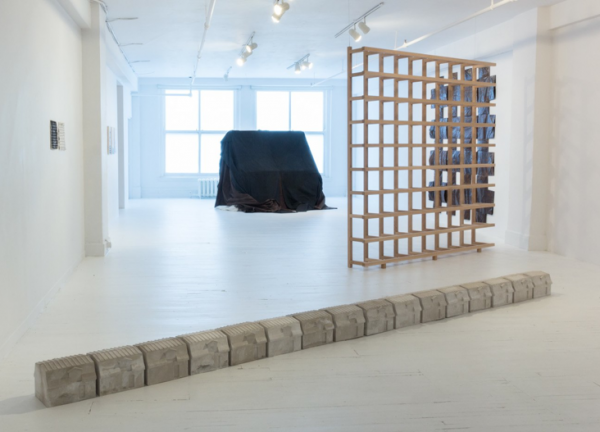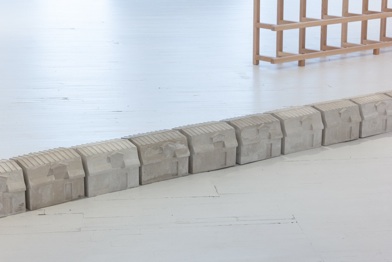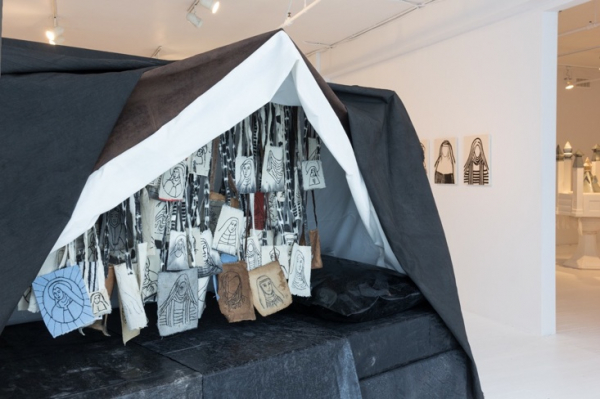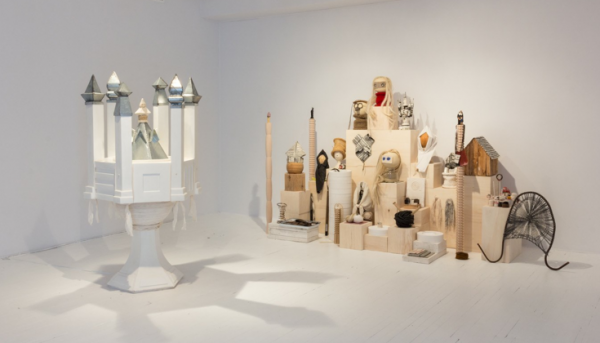Life is punctuated with stages that enable us to move through time, to follow an inner journey and to integrate into society. Each of these stages is a passage that we consider an initiation. Whether derived from a tribal (clan), religious or mysterious (magic) environment,1 they all follow a similarly precise narrative structure. The “fundamental relationship”2 hypothesis is derived here from Simone Vierne. In other words, an archetypal structure exists at the imaginary level, and from this a range of liminal3 manifestations arise in tangible reality – different in form, but identical in essence. For Vœux, Marie-Claude Bouthillier uses her personal, private and introspective version of transitional times and places in order to put diminishing boundaries into perspective. In the exhibition, the narration of these thresholds comes from a reflection inspired by the convent. In her singular language, the artist explores some of the traditional elements, such as the gate of the parlour and the starched fabric of the nun’s habit, in order to show them as articulated, visible markers of the liminal.
These two elements have a common structure and an interwoven texture that echoes the canvas. Marie-Claude Bouthillier’s reflection on the painter’s favoured support allows her to push the liminal to its climax in the labour of folding and tucking. The canvas refers not only to the artist’s support and surface. It lifts the veil on the nuns’ lives and their secluded universe. But here, the inherent solitude of the reclusive life is not synonymous with abandonment, confinement or captivity; it leads to a revealing of one’s inner depths. Furthermore, isolation is not necessarily a burden. It enables a feminine way of dialoguing with that of the sacred, giving form and body to a serene silence from which can spring insight and illumination. In Marie-Claude Bouthillier’s work, this should not be considered only from a religious point of view. Illumination also refers to the intellectual activity of the artist who works in silence, alone in her studio to create a work… her work.
In the exhibition, this whole process takes place through a profusion of gates and doors; thus defining the boundaries between the inside and the outside, between the religious and the secular, or again between the sacred and the profane. And facing this, everyone experiences their own limitations. Sometimes there are borders that we would like to cross but cannot; sometimes there are borders that we should, but do not want to cross. Crossing the line is to move on to something else: it is to discover and explore.
Émilie Granjon
1 In the early 20th century, leading ethnologists and religious historians Arnold Van Gennep and Mircea Eliade developed typologies that enabled such classifications.
2 Simone Vierne, Rite, roman, initiation. Grenoble: PUG, 2000, p. 8.
3 A term designating a space between two entities or a transient location.








